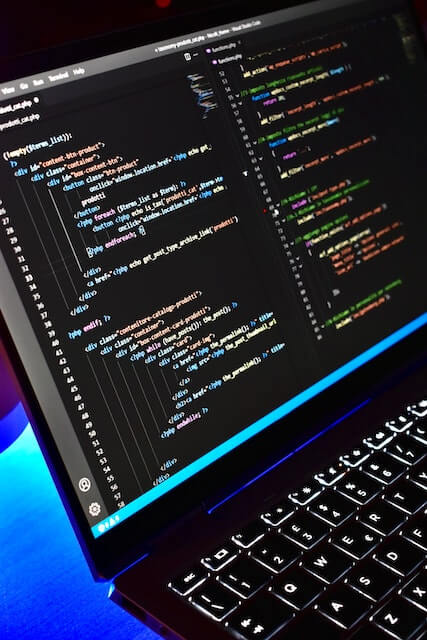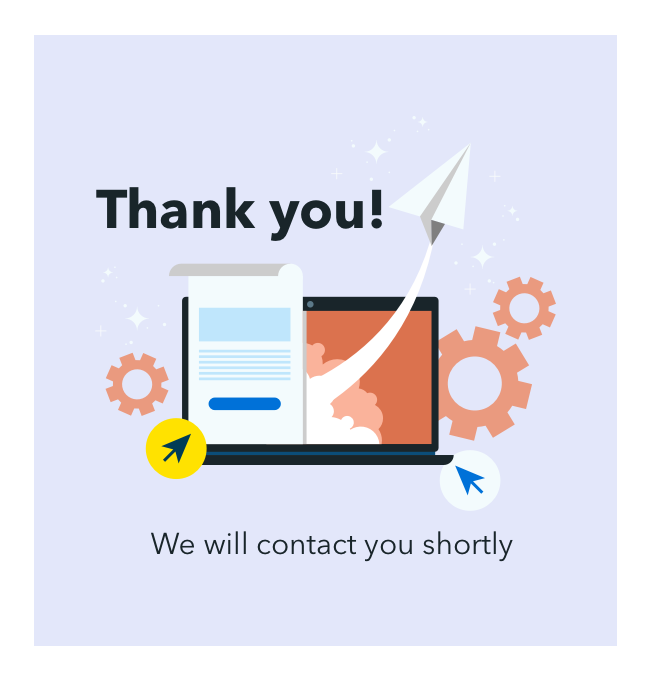
Nearshore Product Development: Build, Innovate, and Scale Efficiently

Nearshore product development, the practice of building tech teams in time-zone-aligned countries, is common among Western companies. From tech giants like Google to fast-growing startups, more and more businesses are setting up development outposts in neighboring countries.
According to Deloitte, 70% of companies adopt nearshoring to access high-quality talent quickly – but they also report a 30-50% reduction in time-to-market. But that’s just the beginning. Nearshoring also helps companies meet client demands more effectively, reduce operational costs, scale teams quickly, and deliver higher-quality software products.
As a tech leader, you’ve likely encountered challenges like tight timelines, rising talent costs, and the need for speedy development without sacrificing quality. That’s why nearshore product development is becoming a go-to strategy for forward-thinking companies.
In this post, we’ll break down what this strategy means, how it differs from other outsourcing models, explore its key advantages, walk through the development process, and outline the different engagement models. Let’s dive in.
What is nearshore product development?
Nearshore product development is the practice of partnering with an external software development team located within a 1–3-hour time difference, typically in a country with more affordable labor costs.
For example, businesses based in Germany often work with nearshore product development teams based in Central and Eastern Europe. In particular, countries like Poland, Ukraine, or Romania take precedence as nearshore hotspots. Meanwhile, companies in the US commonly choose nearshore partners in Mexico, Colombia, or Argentina.
Nearshore product development typically spans the entire product lifecycle: from ideation, prototyping, coding, through Quality Assurance, deployment, and post-launch maintenance. This requires frequent interaction between you as a tech leader and your external team, which lets you retain control of the functions and manage your staff directly.
How nearshore product development differs from nearshore software development
A common opinion is that the difference between nearshore product development and nearshore software development lies in the semantics. While they share some overlap, they serve different purposes when it comes to the scope of work.
Nearshore software development assumes building a tech team to implement technical solutions based on pre-defined requirements. This typically includes such stages as writing code, Quality Assurance, deployment, and software maintenance. This strategy allows you to build a purely technical nearshore software development team of developers, QA engineers, and DevOps specialists.
Nearshore product development, in contrast, is a much broader strategy. It spans the entire lifecycle, from initial market research and ideation to prototyping, design, development, launch, and post-launch support. This model requires tech leaders to manage cross-functional, multidisciplinary teams that go beyond tech roles, including product owners, UX/UI designers, business analysts, project management, and marketing specialists.
Thus, the goal of a nearshore product development team is to work alongside your in-house staff to create a market-ready product that is strategically aligned with your business goals.
Below is a brief comparison of these approaches:
| Nearshore Software Development | Nearshore Product Development | |
| Scope of work | Coding, Quality Assurance, deployment | A full product lifecycle: Market research, UX/UI, development, and launch |
| Team composition | Software engineers, QA, DevOps | Product managers, UX/UI designers, business analysts, marketing experts |
| Business involvement | Follows technical requirements set by the client | Requires collaboration in market research, strategy, and positioning |
| Outcome | A functional software solution | A market-ready product that drives business value |
| Methodologies | Agile, Scrum, Kanban for coding and testing | Combines Agile with Lean Startup, MVP development, and continuous feedback |
Key advantages of nearshore product development
Cost optimization without quality trade-offs
Cost is often the first reason businesses explore nearshore product development: This strategy can save you up to 50% of development costs, according to a recent Accelerance report. Another significant benefit of this approach is getting high-quality results alongside savings.
If you’re based in the US, running a local product team means paying $ 150 K+ per team member per year, plus expenses like employee benefits and overhead. With a nearshore product development team located in Colombia or Argentina, you can access equally skilled professionals for a fraction of that cost, often 30-50% less.
Here’s how nearshore software product development helps you save and get high-quality results:
- Well-educated, skilled workforce: Countries in Eastern Europe and Latin America have strong STEM education systems and deep pools of IT talent, from software engineers, designers, QA, business analysts, and other talent.
- No overhead costs: Setting up an outpost in a nearshore region doesn’t require paying for office space, IT infrastructure, and team administration, as these expenses are covered by the vendor, like nCube.
- No quality compromises: Nearshore developers have vast experience integrating into Western teams, following best practices, and speaking fluent English, which means flawless synchronization with your home-based squad.
- Faster route to ROI: You don’t have to spend months staffing development teams. Nearshore partners like nCube can add experts with diverse expertise within weeks, accelerating product launch.
Time zone and cultural alignment for seamless collaboration
Working with a team located 10+ hours ahead of your headquarters can be challenging. Short feedback loops, instant communication, face-to-face meetings, and business hour alignment are critical in a product development environment. Nearshore outsourcing places your external staff only a few time zones away so that you can synchronize your workday with ease.
If you’re based in North America, your nearshore development team in Latin America will likely be working the same hours you are. If you’re in the EU, your team in Poland, Romania, or Ukraine will be only 1-2 hours ahead.
Here’s how this alignment makes your life easier:
- Real-time collaboration: Daily standups, quick updates, or spontaneous meetings are easy to schedule.
- Rapid decision-making: Your teams can work together without wasting time waiting for feedback.
- Fewer misunderstandings: Common work hours allow for faster issue resolution and more fluid communications.
Alongside time zone alignment, cultural fit also plays a major role in the success of nearshore software product development. Fortunately, nearshore teams often share similar business practices, communication styles, and work ethics with their Western counterparts.
Accelerated time to market with agile methodologies
Product development in a competitive market requires agility to adapt to customer needs and shifting market demands. Nearshore development supports faster product launches – not just because of perfect time zone alignment, but because such teams err on the side of speed and flexibility.
Nearshore partners are often well-versed in the iterative development process, leveraging Agile nearshore software development, Scrum, and Lean software development methodologies. It means your development teams will work in short, iterative cycles, focusing on rapid delivery and feedback.
Here’s how your nearshore software product development will accelerate your time-to-market:
- Fast releases over short sprints: Your nearshore product development team will work in 1–2-week sprints, constantly developing, testing, and improving your product.
- Rapid MVP and Prototyping: Nearshore software outsourcing lets you build bare-bone product versions within a few weeks.
- Continuous delivery: The team releases product updates incrementally, reducing downtime.
- Instant feedback: Real-time collaboration between your teams means your feedback is implemented quickly, without losing time to make progress.
Thus, a nearshore product development team, well-versed in Agile practices and aligned with your time zone, offers rapid onboarding and immediate progress.
Nearshore product development process
Discovery Phase: Market research and feasibility analysis
The discovery phase lays the groundwork for the future nearshore product development. At this stage, your nearshore developers will work with you to align your vision with current market needs and technical capabilities.
The Discovery stage includes analysis of the following aspects:
- Market demand: The team conducts research to validate market demand and identify a niche your product can take.
- Competitor analysis: Understanding competing solutions helps shape your unique value proposition.
- Tech feasibility: The tech team assesses if the product can be built within your budget and time frame. Senior engineers will assess risks and outline potential solutions.
- Target audience: Your team will define your ideal users and how the product fits within their lives.
- Key metrics: Setting clear KPIs ensures your product team stays focused on your goals.
Design and prototyping: User-centric approach
At this phase of nearshore product development, your team will design the initial prototype. Not only should it be functional with core features but also user-friendly, which lays the groundwork for a practical and engaging final product. This includes the following steps:
- Developing wireframes & UI/UX prototypes;
- Collecting user feedback and refining the product;
- Creating an intuitive and engaging user experience.
Development and iteration: Agile and DevOps methodologies
After the first designs are approved and validated, your team will move on to building the product, leveraging Agile development methodology. As we mentioned before, nearshore software product development often goes hand in hand with continuous feedback and rapid iteration cycles.
Working under your leadership, your nearshore product development team will use the following practices:
- Agile delivery: The scope of work is broken into 1-2 week-long sprints. After each sprint, the team reviews progress, provides feedback, and adjusts priorities.
- Continuous feedback: The team performs frequent demos and regular check-ins to progress in real-time and change the course if needed.
- DevOps practices: Automation, continuous integration (CI), and continuous deployment (CD) guarantee fast and reliable updates.
Testing and Quality Assurance
At this stage, your nearshore development team ensures the product works as expected, performs reliably under loads, and is protected against potential security threats.
Quality Assurance in nearshore development typically includes:
- Functional testing: The team tests every feature to confirm it functions as intended.
- Performance testing: The product is evaluated under heavy loads to ensure it runs smoothly during traffic spikes.
- Security testing: Vulnerabilities are identified and fixed early to protect your data.
Deployment and post-launch support
The final stage of the product development process is deployment, but nearshore product development doesn’t end once the product is shipped to the market. After the launch, your nearshore development team is likely to continue optimizing it based on user feedback.
This stage of product development includes:
- Seamless deployment: The team handles the technical side of the product launch.
- Performance monitoring: After the launch, the team watches performance, load times, and tracks errors.
- Maintenance & updates: The team fixes bugs, releases updates, and improves features based on user feedback.
Types of nearshore product development models
Dedicated Development Team
A software Dedicated Team is a full, autonomous team of developers, designers, QA engineers, and a project manager/product owner dedicated entirely to a single product.
This outsourcing model provides a deep alignment with your goals and workflows, with team members fully integrated with your internal processes. Focused on long-term collaboration with a sustainable team, it offers the flexibility to continuously evolve your product, without grappling with employee attrition.
Staff Augmentation
Staff augmentation allows you to add specialized talent to complement your existing in-house team for a defined time frame, for example, during peak workloads.
This approach is beneficial because instead of hiring permanent employees to cover immediate development needs, you’ll get access to the required skill sets like software developers, UX/UI experts, QA engineers without the burden of long-term engagement. This model gives you the flexibility to scale your team up or down as needed, while maintaining control over the project.
Project-Based development
Project-based development is a model where a nearshore product development team takes full ownership of the entire product lifecycle, which lets you stay fully focused on your business.
This approach is based on well-defined product requirements, fixed timelines, and clear deliverables, making it suitable for companies with limited internal development capabilities.
Co-Development model
The co-development outsourcing model is a collaborative approach used for complex projects where your internal team works hand-in-hand with a nearshore product development team. In this setup, the teams share both responsibilities and risks throughout the product development lifecycle.
Rather than fully delegating product development or simply augmenting your staff, this model creates a tight collaborative environment. Both development teams will be contributing and exchanging expertise in UX/UI, development, and delivery. It also lets you retain control over the development process, maintain the product vision while getting greater access to nearshore tech expertise.
| Best for | Team type | Product development control | Duration | |
| Dedicated Development Team | Long-term product development with evolving requirements | A stand-alone team of developers, designers, QA, PM/PO dedicated to a single project | High integration with in-house team; full alignment with client goals | Long-term |
| Staff Augmentation | Filling temporary skill gaps | Specific skills integrated into a client’s team | Client retains full control; nearshore experts integrate into workflows | Mid-term |
| Project-Based nearshoring | Projects or MVPs with clear scope | Nearshore team managing end-to-end product development | Low involvement after team launch; vendor manages SDLC | Fixed |
| Co-Development model | Complex products requiring shared expertise | Mixed teams (internal + nearshore) collaborating closely | Shared responsibility and decision-making | Long-term |
Is nearshoring right for me?
If you’re weighing the pros and cons of nearshoring, real-world examples can offer valuable perspective. Here’s a case of how a nearshore partner like nCube can go beyond filling roles to become a true driver of product success.
Life360 and nCube cooperation: A nearshore success story
Challenge: Life360, the leading family location safety app, previously faced challenges with expensive local developers and low-cost vendors, leading to subpar quality and inconsistent delivery.
When they reached out to nCube, the company required a reliable, cost-effective nearshoring partner that could deliver high engineering performance along with cultural fit and long-term integration with their local staff.
Solution by nCube: Life360 partnered with nCube in late 2020 to establish a development center in Eastern Europe. Starting with a small team, the partnership gradually scaled to over 50 engineers across key areas, including:
- iOS
- Android
- React JS
- Java Cloud
- Kubernetes
- Docker
- PHP
- Web development
Outcome of cooperation: nCube’s engineers played a key role in reshaping Life360’s product, optimizing performance, dramatically reducing battery drain, and enhancing the overall user experience. As the collaboration matured, nCube integrated strong tech leads and built a cohesive team structure to support long-term product growth.
Approximately 70% of nearshore engineers provided by nCube became Core Team Members (CTMs) at Life360, highlighting not only the depth of integration but also the strategic impact of the nearshoring outsourcing model.
What began as a resource solution evolved into a foundation for product excellence. 👉 Read full Life360-nCube case.
Conclusion
Nearshore software product development is more than a cost-cutting tool. It’s a strategy for companies looking to build high-quality products, reduce time-to-market, and keep internal staff focused on critical tasks.
By working with teams in nearshore outsourcing regions like Central & Eastern Europe and Latin America, you gain access to world-class talent, real-time collaboration, cultural compatibility, alongside lower rates.
So, how to get started with a nearshore product development team? First off, focus on selecting a reliable vendor who will help you get the most out of the talent pools in the country of your choice. We at nCube will be happy to guide you in your journey by helping you build a skilled, experienced, and sustainable team in Eastern Europe and Latin America. Contact us and let’s discuss your product development needs.
Recommended articles


